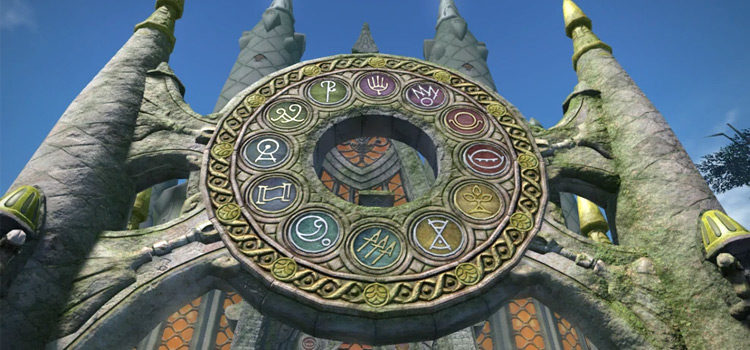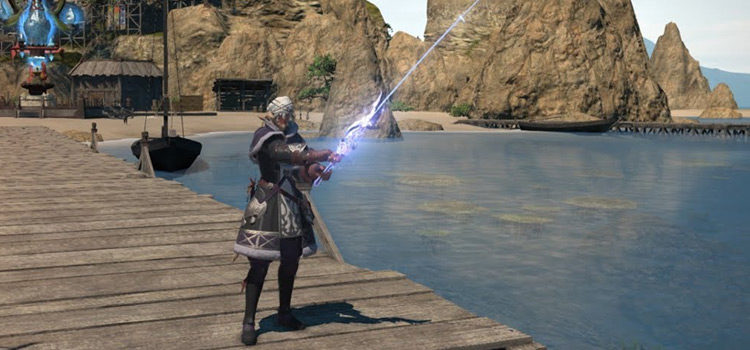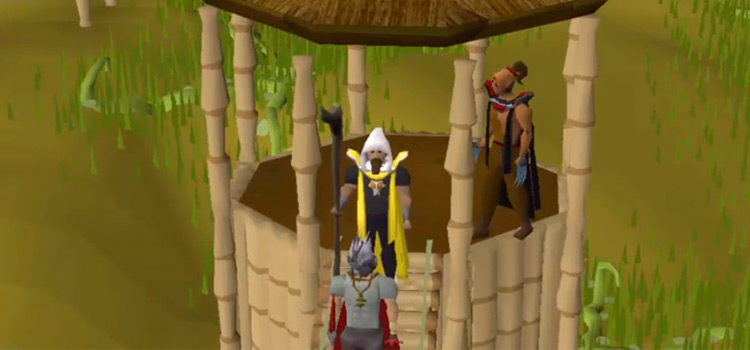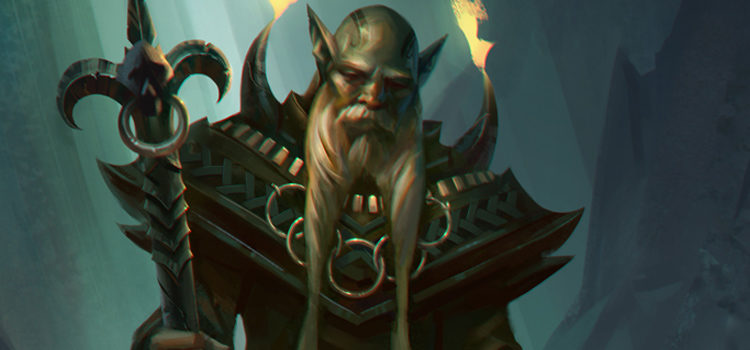What is Dexterity in D&D 5e? (And What Does It Do)
This post may contain affiliate links. If you buy something we may get a small commission at no extra cost to you. (Learn more).
Dexterity is a measure of a character’s nimbleness and agility, muscular coordination, and balance. It’s one of the 6 primary ability scores that measure a character’s physical and mental abilities.
In D&D 5e, Dexterity is often known as the “God stat” because having a high dexterity can be useful to almost every character, especially in combat, although it’s certainly more useful to some characters than others.
Rogues and monks, for example, rely heavily on dexterity. As do most dual-wielding martial characters or characters that rely on a bow or crossbow.
Dexterity is used for several different things in 5e including (a) initiative, (b) dexterity saving throws, (c) attack and damage rolls with finesse or ranged weapons, (d) armor class calculations, (e) certain skill checks, and (f) dexterity ability checks.
Initiative
Because every character gets to add their dexterity modifier to their initiative, dexterity can be valuable to every character in D&D.
For example, a character with 14 dexterity (+2) adds +2 to every initiative roll in the game.
Note: rolling for initiative is technically a type of ability check. See below for information on other types of dexterity ability checks.
What are Dexterity Saving Throws?
Dexterity saving throws are rolls that are typically made to dodge out of the way of dangerous spells or hazards.
They’re one of the three most important saving throws in the game (along with Con and Wis), and in many campaigns, dexterity saving throws are the most common type of saving throw.
Often Dex saving throws are used to partially avoid damage from effects like a fireball. With such effects, you often still take half damage, even if you’re successful on the save.
For this reason, failing a dexterity saving throw is rarely debilitating (unless you fall unconscious), unlike Con and Wis saves, where those can often result in serious conditions such as poisoned, paralyzed or charmed.
Weapon Attack and Damage Rolls
Melee weapons with the finesse property can use Dexterity instead of strength for the attack and damage calculations.
Ranged weapons always use dexterity for attack and damage rolls.
Thrown weapons can only use dexterity for attack and damage rolls if they also have the finesse property.
This means that characters with a high dexterity often benefit from using either ranged or finesse weapons.
The list of finesse weapons is somewhat limited. There’s only one finesse weapon with the reach property (the whip, which does poor damage), and zero finesse weapons that are heavy or two-handed.
For this reason, Dexterity-based weapons are a bit less powerful and versatile than strength-based weapons.
However, these downsides may be offset by other benefits that Dex-based characters get, such as the sneak attack damage that rogues have, or the ability to dual-wield two weapons at the same time.
The rapier is often the best weapon for Dex-based martial characters.
Dexterity & Armor Class (AC) Calculations
When wearing certain types of armor, characters can add some (or all) of their dexterity modifier to their armor class.
For characters in heavy armor, dexterity does not affect their AC. For this reason, dexterity is less important if you wear heavy armor.
For characters with medium armor, they can add their dexterity ability modifier to their armor class, but only up to +2. This means that most characters who intend to wear medium armor can benefit immensely with a dexterity of 14 (+2), but anything higher than that may be unnecessary.
For characters with light armor, no armor, or who use the mage armor spell, they can add their full dexterity modifier to AC. This can make a high dexterity essential to help these characters to survive in combat.
Some characters have special ways of calculating their AC.
For example, monks can use (10 + Dex modifier + Wis modifier), which makes dexterity pretty much a requirement for monks. Barbarians can use AC = (10 + Dex modifier + Con modifier). However, they can also use medium armor and shields, so Dexterity is less important for them.
Although having at least a 14 Dex would be ideal. Since some of the barbarian’s other abilities rely on strength, most barbarians would benefit from focusing on strength over dexterity.
Some races have special ways of calculating their AC, which may or may not rely on dexterity.
Remember, characters can only use one method to determine their armor class. For example, a barbarian cannot combine unarmored defense with armor.
Dexterity-Based Skills
There are 3 skills that are typically based on dexterity: Acrobatics, Sleight of Hand, and Stealth.
Although these skills are particularly relevant to rogues, they can be useful for many different characters.
Stealth is often the most useful of these skills. Stealth may be used to sneak through a hallway unnoticed, to hide, or to hide an object. Stealth can even be used to hide during the middle of combat. Note: certain kinds of medium and heavy armor give a player disadvantage on stealth checks.
Sleight of Hand can be used to do things like pick pocket items, perform coin tricks, slip incriminating evidence into someone’s pocket, slip an item into your own pocket, cheat at cards, tie knots, and cast a spell without anyone noticing your somatic components (if your DM allows it).
Acrobatics sometimes overlaps with the athletics skills, which is typically based on Str.
In general, acrobatics skill checks are used to maintain balance, leap and tumble, moving past enemies, flipping and rolling, etc.
Athletics is often used for climbing and jumping, although it’s not uncommon for DMs to allow players to use acrobatics for certain kinds of these rolls. Athletics is also used for swimming, feats of strength and grappling, hanging to the edge of a cliff, etc.
Dexterity Ability Checks
A DM can also ask a player to make a dexterity ability check for reasons other than rolling for initiative.
Typically, this would be done to make a roll to do something that involves dexterity, but doesn’t mix with one of the dexterity-based skills and isn’t a saving throw.
For example, you might be asked to make a Dex ability check to use a set of jeweler’s tools, to repair a broken amulet. If you were proficient in using jeweler’s tools, you would be allowed to add your proficiency bonus to this roll.
Understanding Dexterity in 5e
As you can see, Dexterity has a lot of uses in D&D 5e.
In fact, if you roll randomly for ability scores and have very poor rolls, you can still make a perfectly serviceable character by focusing only on dexterity.
Having said that, sometimes it’s fun to play a clumsy character with low dexterity who stomps around in heavy armor.
If you want to dump Dex without dumping AC, you could play a tortle or loxodon, both of which get natural armor that doesn’t depend on Dex.
My general recommendation for starting dexterity based on each 5e class is listed below:
| Class | Recommended Starting Value |
|---|---|
| Artificer | 14, or lower if you plan to go into the Armorer subclass and wear heavy armor |
| Barbarian | 14 |
| Bard | 14, or lower if you plan to become a Valor bard and wear heavy armor |
| Cleric | 14, or lower if you plan to take a subclass with heavy armor |
| Druid | 14 |
| Fighter | 14, or 16+ if you want to use finesse or ranged weapons |
| Monk | 16+ |
| Paladin | 10+ if you plan to use heavy armor, or higher if you want to use medium or light armor, or use finesse or ranged weapons |
| Ranger | 14 for str-based melee builds, 16+ for archery or dual-weapon builds |
| Rogue | 16+ |
| Sorcerer | 16 |
| Warlock | 16, or 14 for the hexblade subclass |
| Wizard | 16 |






